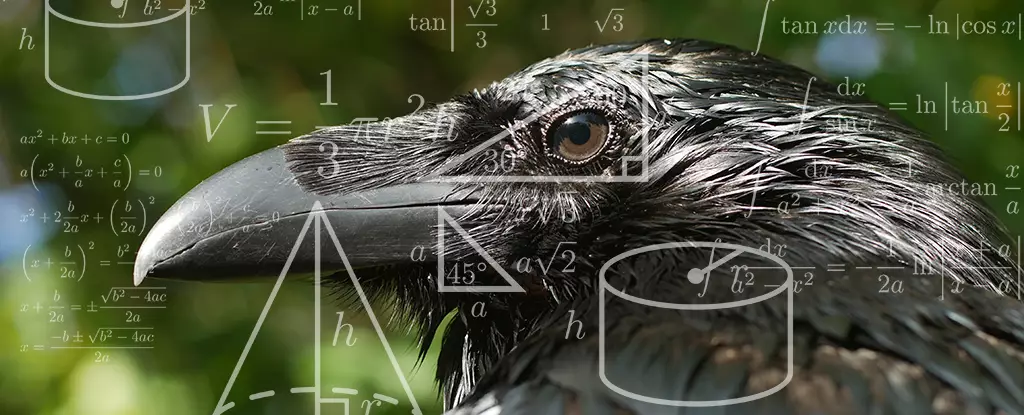Recent studies have illuminated the remarkable cognitive capabilities of crows, revealing an astonishing affinity for geometric reasoning that was once believed to be a hallmark of human intelligence. In an era where we often underestimate the mental faculties of non-human animals, this revelation challenges deeply entrenched notions regarding the nature of intelligence itself, prompting us to reconsider our biases toward avian species. With crows displaying an intrinsic understanding of geometric regularity and the ability to identify anomalous shapes, we are confronted with an opportunity to expand our understanding of intelligence across the animal kingdom.
The Experiment: A Window into Avian Minds
Conducted by animal physiologist Andreas Nieder and his colleagues at the University of Tübingen, the study involved two male carrion crows, aged ten and eleven. Using computerized displays to test the birds’ geometric recognition, the researchers set up a series of trials where the crows were trained to identify a single shape that deviated from a set of otherwise identical geometric figures. The ingenuity of this experimental design prevented the crows from relying on learned behaviors, instead highlighting their innate geometric sensibilities.
What sets this research apart is the methodological rigor employed in the trials. By progressively increasing the complexity of the geometric figures, the researchers established a clear gradient of difficulty for the crows. The results were astonishing: the crows demonstrated an ease in identifying out-of-place shapes among more regular, familiar figures like squares and rectangles, reflecting a deeper evolutionary connection to geometric reasoning than most had previously acknowledged.
The Evolutionary Implications
This groundbreaking discovery suggests that the capacity for geometric recognition is not exclusively human but rather may be a trait that exists within a broader spectrum of animal intelligence. The idea that crows can intuitively grasp geometric properties serves as a poignant reminder that intelligence is not a monolithic construct, confined to a single species. Instead, it provokes the question of how diversity in cognitive abilities may enhance the survival strategies of various species.
Nieder’s findings imply that the understanding of spatial regularities is not only relevant for humans navigating urban landscapes but also for crows and other animal species that rely on geometric cues for navigation and orientation in their environments. This shared cognitive trait, irrespective of the biological differences, nudges us toward a more inclusive perspective on intelligence—a democratization of cognitive skills across species that allows us to appreciate the nuanced ways in which animals interact with their surroundings.
Confronting Anthropocentrism in Animal Cognition
In the larger context, the implications of this research call for a re-evaluation of anthropocentric views that prioritize human capabilities as the apex of intelligence. Crows exhibiting geometric intuition not only invites us to debunk the myth of human uniqueness in cognition, but, more importantly, it challenges our moral frameworks concerning the treatment of animals based on perceived intelligence.
As we begin to acknowledge that various species possess intricate cognitive skills that parallel our own, we must confront the ethical ramifications of our treatment toward these creatures. If intelligence is more widespread across species than we previously understood, the justification for depriving animals of welfare based on supposed cognitive inferiority erodes significantly.
Crows: Nature’s Unsung Geniuses
Ultimately, the revelations concerning crows and their geometric analysis resonate far beyond mere scientific curiosity. They unveil the astounding potential innately found within these creatures, positioning crows as unsung geniuses of the animal world. This newfound understanding invites a broader conversation about how we value animal intelligence and enriches our relationship with the natural world.
In a society grappling with a myriad of crises—from climate change to biodiversity loss—embracing the intelligence of crows and other creatures offers a hopeful narrative. By recognizing and celebrating their cognitive prowess, we gain a deeper appreciation for the complexity of life itself, allowing us to foster more ethical and compassionate relationships with all forms of life on Earth.


Leave a Reply